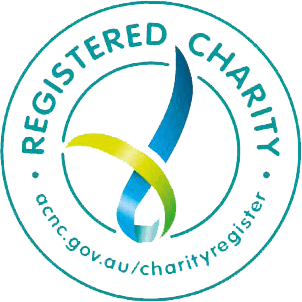News
New Australian Government Child Care Subsidy
Information for foster and kinship carers and foster and kinship care agencies
New Child Care Subsidy for Australian families
The Australian Government’s new Child Care Subsidy commences on 2 July 2018. The Child Care Subsidy replaces the existing Child Care Benefit and Child Care Rebate. As part of the changes an Additional Child Care Subsidy has also been introduced to support vulnerable families.
Information about eligibility for the Child Care Subsidy is available on the Department of Human Services’ website www.humanservices.gov.au/childcaresubsidy
Additional Child Care Subsidy
The Additional Child Care Subsidy gives some families extra assistance with the cost of child care. There are four categories of Additional Child Care Subsidy, one of which is ‘Child Wellbeing’. This payment is for families who need practical help to support their child’s wellbeing, and is intended to prevent cost being a barrier to children who are at risk of abuse or neglect participating in child care.
Eligibility
To be eligible for the Additional Child Care Subsidy (Child Wellbeing), families must first satisfy eligibility requirements for the broader Child Care Subsidy. These eligibility requirements relate to the child’s age and immunisation status, and the families residency status.
In addition, the child must also be at risk of serious abuse or neglect for the purposes of the Additional Child Care Subsidy.
A child is taken to be at risk of serious abuse or neglect if the Department of Child Safety, Youth and Women has assessed the child as in need or protection under the Child Protection Act 1999; or a child care service provider has identified the child as being at risk of suffering harm as a result of serious abuse, neglect or domestic and family violence.
What the new subsidy means for foster and kinship carers
If all eligibility requirements for the Child Care Subsidy are met, foster and kinship carers are eligible for the the Additional Child Care Subsidy (Child Wellbeing).
All children in foster or kinship care who have been assessed as being in need of protection under the Child Protection Act 1999 will automatically satisfy the ‘at risk’ threshold for the Additional Child Care Subsidy (child wellbeing).
Importantly, foster and kinship carers eligible for the Additional Child Care Subsidy (Child Wellbeing) will be entitled to up to 100 hours of subsidised child care per fortnight. This is regardless of their family’s income or their level of activity (work, training or study).
All arrangements for Child Care must be discussed with the Child Safety Officer prior to starting. Child Care arrangements should be a part of the Case Plan for children or young people.
Payment of the Additional Child Care Subsidy
The Additional Child Care Subsidy (child wellbeing) is paid directly to approved child care service providers to reduce the cost of child care for eligible families.
Eligible families will receive a subsidy equal to the actual fee charged by the child care service, up to 120 per cent of the Child Care Subsidy hourly rate cap, whichever is lower. In most cases, the full cost of care will be covered.
When enrolling a child, foster and kinship carers should discuss the child’s circumstances with the child care provider so they are aware the child is eligible for the Additional Child Care Subsidy (Wellbeing). This will allow the child care provider to make the necessary arrangements with the Department of Human Services.
Initially the child care provider can approve the Additional Child Care Subsidy (Child Wellbeing) for up to six weeks.
If the child care provider believes the child will continue to be ‘at risk’, they can apply to the Department of Human Services for a determination to continue the subsidy for up to an additional 13 weeks. The child care provider will need to provide evidence to support their application (e.g. a copy of the court order, Authority to Care document, or a letter or statement from the Department of Child Safety, Youth and Women). Foster and kinship carers can request this supporting documentation from the Department of Child Safety, Youth and Women.
Once a determination has been made by the Department of Human Services to continue the subsidy, it will cover all child care providers and services the child attends that are approved to receive Commonwealth child care assistance. This includes approved long day care, family day care and outside school hours care services.
After the additional 13 weeks, the Department of Human Services can make a determination that no further applications are required. However, the child care provider will be required to review the child’s circumstances.
For as long as a child remains eligible for the Child Care Subsidy, there is no limit to how long the Additional Child Care Subsidy (Child Wellbeing) can be provided for a child who remains at risk of serious abuse or neglect.
How foster and kinship carers can get ready for the new subsidy
Foster and kinship carers should complete their Child Care Subsidy Assessment online through their MyGov account. Carers who have not completed their assessment by 2 July 2018 will not continue to receive child care assistance after 2 July 2018.
Information about the new subsidy and how to transition is available on the Commonwealth Department of Education’s website www.education.gov.au/childcare
What department staff need to do
Departmental staff will need to ensure that foster and kinship carers are provided with appropriate documentation to support their application (e.g. Authority to Care form, Court Order, or a letter or statement from the department). Foster and kinship carers can then share that information with their child care provider to assist them with their application for the Additional Child Care Subsidy (Child Wellbeing).
Further information
For more information contact the Australian Department of Education and Training on 1300 566 046 or visit:


